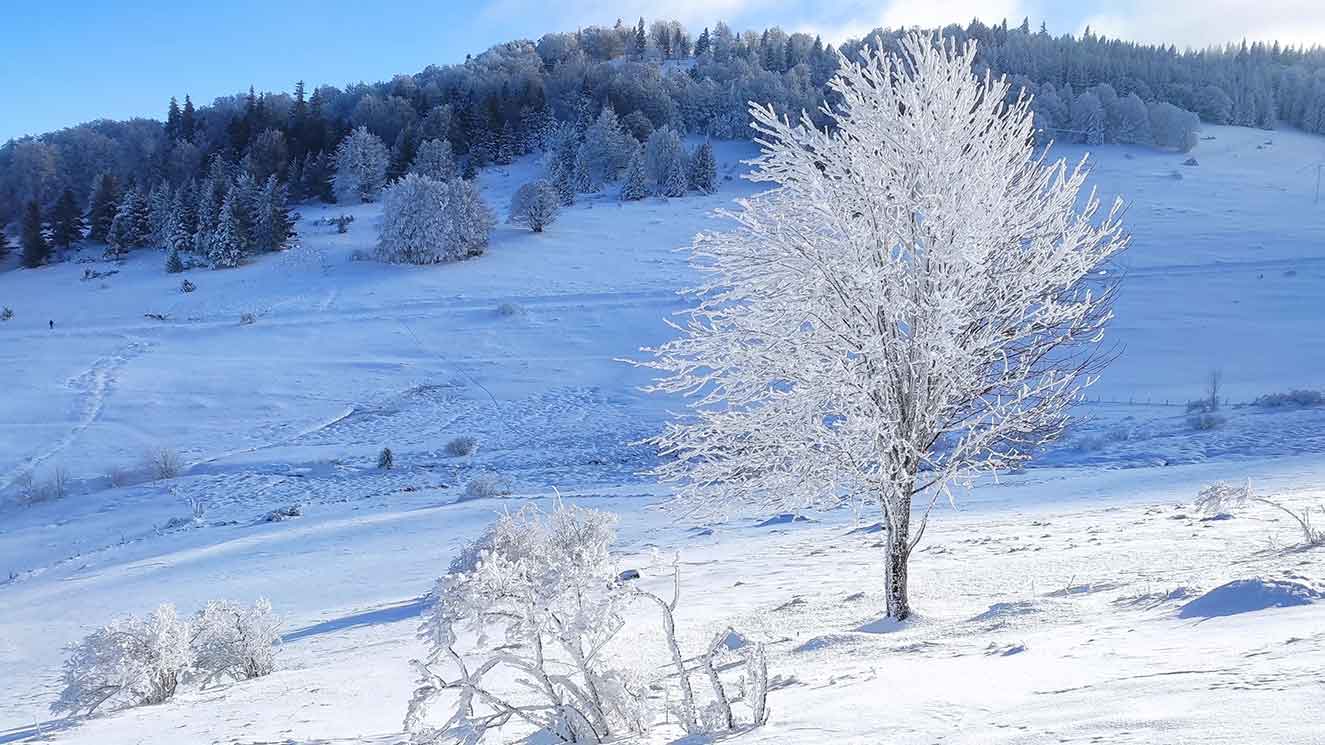Identifying a tree by its leaves, blossom or seeds is one thing, but after the wind and the rain of autumn has stripped them of all that, and what remains is the silhouette of trunk and branches, can you still tell a sycamore from a horse chestnut? Here are some top tips on how to identify familiar UK trees in winter.
The local park is a good place to start, as trees tend to be planted further apart there than in the woods or at an arboretum, which means they can spread out fully and you can get a clearer look at them. Trees that have been coppiced may be harder to identify, but the shapes of those that are healthy and fully grown will soon become familiar to you.
Using a winter tree identification guide such as this one from Tree Guide UK to help you, choose your tree and then examine it carefully, looking out for the following features:
1. From a distance look at the overall shape
Trees can be monopodial or sympodial. In monopodial trees, the main growth is in the same direction every year with branching on either side e.g Ash, Aspen and Lombardy Poplar. In sympodial trees, the main growth changes every time a branch is formed giving a zig-zag and ‘twiggy’ appearance e.g Maples, Limes and Oaks.
2. Move closer and look at the branches
A Common Ash, for example, has upward turning branches with opposite shoots, while the English Oak has many short shoots at the end of branches.
3. Examine any catkins that appear before the leaves
A catkin is a cluster of unisexual flowers that have no petals. On wind pollinated trees, most catkins are long and thin and hang down below the shoot. These are found on Oak, Poplar, Birch, Alder, Hazel and Hornbeam but female Alder catkins are cone-like. On insect pollinated trees, like the Goat Willow, catkins may be short and fat.
4. Examine the buds
Tree buds remain dormant during the winter and open in the following spring. Inside each bud are tiny preformed leaves, shoots or flowers. Examine the buds and stem closely and then use your tree identification guide to see what they are.
5. Compare the bark
Some trees have distinctive bark. In winter this may be the easiest way to identify your tree. What colour is your tree’s bark? Is it smooth and peeling, or ridged and plated?
6. Examine any thorns
Thorns have evolved on trees and shrubs as a defence against herbivore grazing, particularly during the early years of growth and establishment. In upland areas of Britain, heavily grazed by sheep, Hawthorn is often the only tree to survive. Not many tree species in Britain are thorny, so this may be a quick way to identify your tree.
7. Search for any old fruit on or under the tree
Some trees have old fruit on the tree or fruit husks that stay on or around the tree all winter. Look on the branches and on the ground around your tree for clues.
8. Search for any old leaves under the tree
In winter you may find old leaves, still on the tree or lying on the ground under the tree. Use this option to quickly identify the tree in winter.
Special thanks to Alan Birkett from Tree Guide UK.




